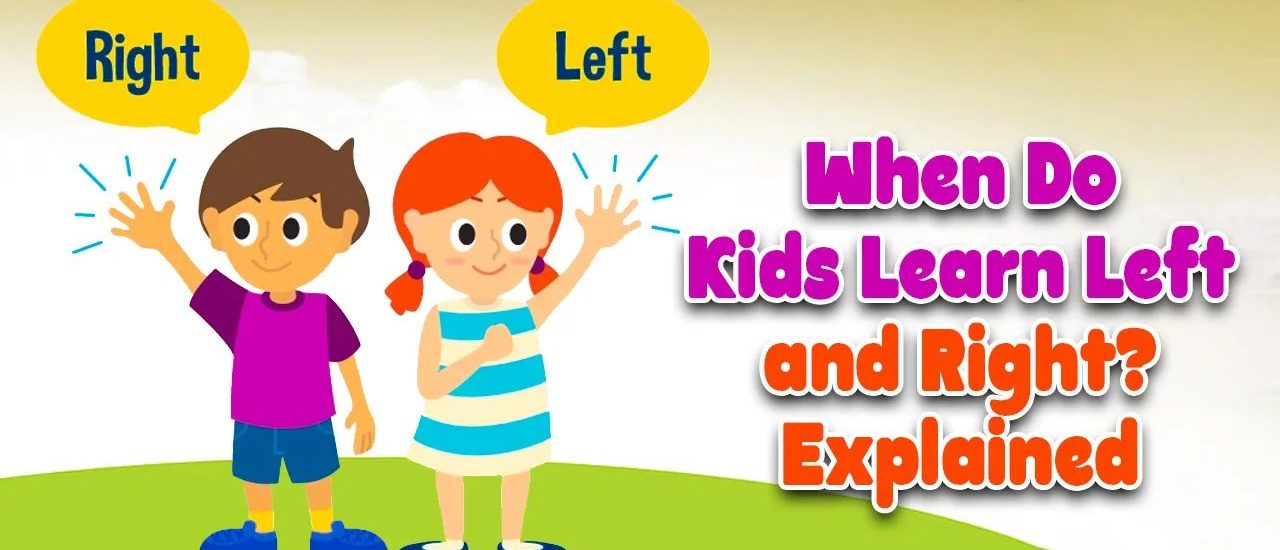Kids typically learn left and right between the ages of 4 and 6. Understanding directional concepts like left and right is a crucial developmental milestone. This skill plays a vital role in daily activities, such as reading, writing, and navigating the world around them. So, when do kids learn left and right? Let’s explore the fascinating journey of how children grasp these essential concepts.
When Do Kids Learn Left and Right: A Guide for Parents
As children grow and develop, they start to learn about basic concepts such as left and right. Teaching kids to differentiate between their left and right hands or directions is an important milestone in their cognitive development. In this article, we will delve into the fascinating world of how and when kids learn about left and right, providing insights and tips for parents to support their children along the way.
The Concept of Left and Right
Understanding left and right is a fundamental aspect of spatial awareness and orientation. For kids, grasping the concept of left and right can be a bit tricky, as it involves not only cognitive understanding but also physical coordination. The left and right sides of the body are linked to the brain’s hemispheres, with each side controlling different functions and movements.
Developmental Milestones
Children typically begin to show an awareness of left and right around the age of 3 or 4. At this stage, they may start to recognize their left and right hands and use these terms in simple everyday activities. By the time kids are around 5 or 6 years old, they usually have a better understanding of left and right and can apply these concepts more consistently in their daily lives.
It’s important to remember that every child develops at their own pace, so some kids may grasp the concept of left and right earlier or later than others. As a parent, it’s essential to be patient and provide support and guidance as your child navigates this learning journey.
Activities to Teach Left and Right
There are various fun and engaging activities that parents can use to help their kids learn about left and right. These activities not only reinforce the concept but also enhance coordination and cognitive skills. Here are some ideas to get you started:
1. Simon Says
Playing a game of Simon Says is a fantastic way to integrate learning left and right into a fun activity. You can give instructions such as “Simon says touch your left ear” or “Simon says raise your right hand,” allowing kids to practice identifying their left and right sides in a playful manner.
2. Dance Party
Crank up the music and have a dance party with your child. While dancing, you can use directional cues like “step to the left” or “clap your hands to the right,” helping kids associate movements with the concepts of left and right.
3. Follow the Leader
Take turns being the leader and have your child mimic your movements. You can incorporate movements that involve using the left or right side of the body, such as hopping on your left foot or reaching with your right hand. This activity encourages physical coordination and reinforces the understanding of left and right.
Challenges and Tips
While learning left and right is a natural part of a child’s development, some kids may face challenges in fully grasping these concepts. As a parent, there are several strategies you can use to help your child overcome these challenges:
1. Use Visual Cues
Visual aids such as stickers or colored bands on the left and right sides can help kids visually distinguish between the two. You can also use directional arrows or signs in the environment to reinforce the concept of left and right.
2. Practice Regularly
Consistent practice is key to mastering the concept of left and right. Encourage your child to use directional language in everyday activities, such as when getting dressed, setting the table, or giving directions while driving. The more exposure they have to these concepts, the quicker they will internalize them.
3. Be Patient and Supportive
Learning left and right can be challenging for some children, so it’s essential to be patient and supportive throughout the process. Offer praise and encouragement when your child makes progress, and provide gentle guidance when they make mistakes. Positive reinforcement goes a long way in building your child’s confidence and understanding.
In conclusion, the journey of learning left and right is an exciting and essential part of a child’s development. By engaging in fun activities, providing support, and being patient, parents can help their kids navigate this learning milestone with confidence. Remember, every child is unique, so celebrate their progress and enjoy watching them grow and learn!
Learning Left and Right | Follow Along Activity for Kids
Frequently Asked Questions
At what age do children typically learn the concepts of left and right?
Children usually start to grasp the concepts of left and right between the ages of 3 and 5. This understanding continues to develop as they grow older, with some children fully mastering the concept by the age of 7.
How can parents and caregivers help children learn left and right?
One effective way to help children learn left and right is to incorporate directional language into daily activities. Parents and caregivers can give simple instructions such as “put on your left shoe” or “turn right at the corner” to reinforce these concepts in a practical way.
Are there any activities or games that can assist children in understanding left and right?
Engaging in activities that involve directions and spatial awareness can be beneficial for children to learn left and right. Games like Simon Says, following choreographed dances, or using a map to navigate can all help reinforce these concepts in a fun and interactive manner.
Final Thoughts
Children typically learn left and right between the ages of 4 and 6. This milestone is significant as it helps them understand spatial concepts and directions. Parents can support this learning by incorporating fun activities that involve identifying left and right, such as playing games or dancing. Overall, understanding when kids learn left and right can aid in their cognitive development and everyday tasks.






